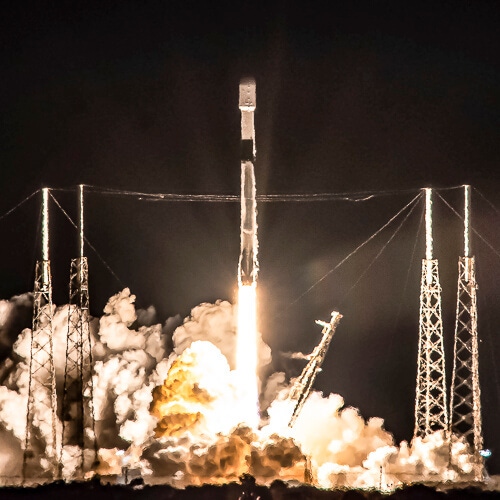
Low-Earth orbit (LEO) satellite broadband provider Starlink, an Elon Musk SpaceXcompany, is making good on its promise to diversify into in-flight wireless connectivity.
For an undisclosed sum, SpaceX – as reported by Reuters – has signed a deal with US independent air carrier JSX to kit out some 100 planes with Starlink terminals.
It is the first aviation agreement that SpaceX has struck. If all goes to plan, according to JSX, the first flights equipped with Starlink-enabled connectivity will be taking off before the end of the year.
Figure 1:  Starlink is also among six companies selected by NASA to develop near-Earth space communication services to support future missions.
Starlink is also among six companies selected by NASA to develop near-Earth space communication services to support future missions.
(Source: Official Space X Photos on Flickr CC2.0)
The airline added that the Starlink service comes at no extra cost for passengers and will "not require logging in or other complexities associated with legacy systems."
At last month's Satellite 2022 conference, as reported by Space News, Jonathan Hofeller, VP of Starlink commercial sales at SpaceX, flagged in-flight connectivity as a promising area in which the LEO satellite broadband provider could expand its addressable market beyond Internet services for consumers and enterprise customers.
"Connectivity on airplanes is something we think is ripe for an overhaul," he said in an apparent jab at incumbent providers such as Viasat.
Other areas of diversification, said Hofeller, include services for schools and mobile backhaul.
Starlink is already being used by Vodafone Ukraine for mobile backhaul to help reconnect battle-scarred towns. A basestation not far from Irpin and Romanivka (located near capital city Kyiv), equipped with Starlink equipment, enables a satellite-based transport network. Both 2G and 4G configurations are supported by the setup.
The final frontier
Starlink was also among six US satellite communications providers selected by NASA to begin developing and demonstrating near-Earth space communication services that may support future agency missions.
Want to know more about satellite? Check out our dedicated satellite content channel here on Light Reading.
Other NASA contract winners are Amazon, Inmarsat, SES, Telesat and ViaSat. The combined value of the agency's Communications Services Project (CSP) funded agreements is $278.5 million.
Each company must complete technology development and in-space demonstrations by 2025, said NASA, "to prove their proposed solution will deliver robust, reliable, and cost-effective mission-oriented operations, including the ability for new high-rate and high-capacity two-way communications."
Related posts:
— Ken Wieland, contributing editor, special to Light Reading
About the Author(s)
You May Also Like










